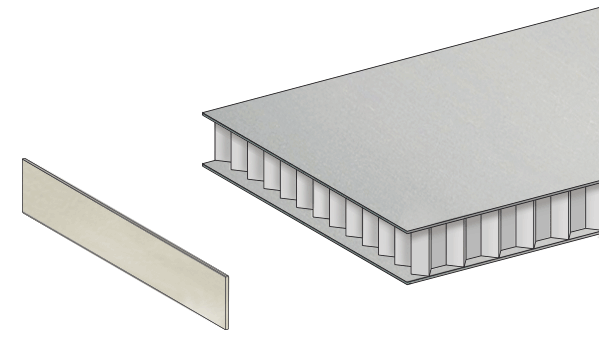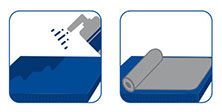
Contact us

To meet inquiries from all branches and sectors and in order to realise our customer-specific projects, we have developed a high -tech industrial process working according to the specifications of the designers and of engineering offices.
You can receive a quotation for small, medium or large production lots

These mechanical processes are performed by a CNC (Numerical Control Machines) programmed by a specialized staff who read the drawings provided by the customers and realized them.

The panels to be cut can be provided with different edges depending on the aesthetic requirements or the available budget.
Edging with a plate (or applied edge)
For this type of edging, extrusions made of different materials can be used: aluminium, laminate, PVC, ABS, also of a colour that matches the top layer. A suitable adhesive with an excellent tear resistance is applied

T - Edge -profile
Extrusions are glued in with suitable adhesives after having milled the plates. The combination of milling and gluing permits to have tightness and rigidity in the outer borders

C - Edge profile
Extrusions are glued after milling part of the honeycomb or foam. Excellent aesthetic finish and greater durability in the outer border.

Folding an edge of the upper skin
The core (honeycomb or foam) is partially removed by milling along the edge to be folded. The slightly incised skin is then folded and glued perfectly flat. The result is an aesthetically uniform, homogeneous and perfectly processed panel.

 Routing and folding technique - also for tray productions
Routing and folding technique - also for tray productionsThe panel skin is cut according to the drawing measures (final dimensions) specified by the customer. V-shaped or rectangular grooves are made along fold lines, without cutting the upper skin, whereupon the adhesive is applied. The low density of the material enables easy folding. After folding the object is cleaned, dried and packaged.

 Joining and fixing
Joining and fixingFor some projects or uses, the panels must be provided with anchoring systems necessary to fasten it to other surfaces.
The type of panel and the material determine the most suitable fastening system.
Here are a few options:
- The panels are attached to each other by visible or blind rivets and screws
- Fixing with self-tapping screws (sealing washers) in aluminium or stainless steel suitable for the corresponding substructure
- Fastening with drilling screws

Oxidation
Natural aluminium plates can be treated with anodic oxidation. This process increases the surface hardness and protects the surface from weather and corrosion e.g. near marine environments.
Paintings
The natural aluminium panels can be painted with powder or liquid colours to adapt to various decorative requirements.
Serigraphy
New digital technologies enable prints with exceptional resolution and durability thanks to the use of UV-reactive inks. Architects’ and designers’ personalizations are infinite and unique.